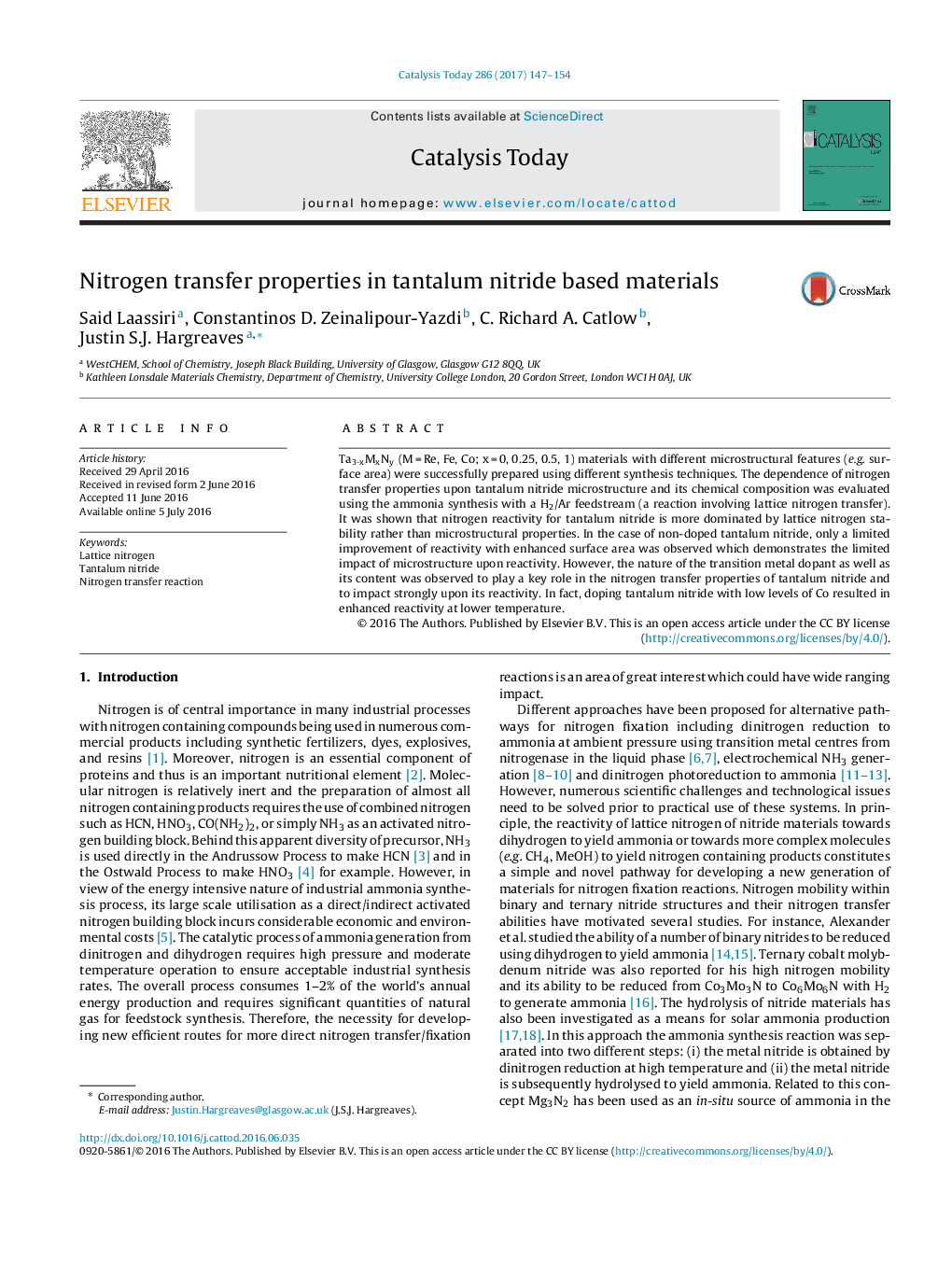| Article ID | Journal | Published Year | Pages | File Type |
|---|---|---|---|---|
| 6455307 | Catalysis Today | 2017 | 8 Pages |
â¢Tantalum nitride materials with different surface area were prepared.â¢Lattice nitrogen reactivity was studied using ammonia synthesis reaction.â¢Ammonia synthesis proceeds via a mechanism akin to Mars - van Krevelen mechanism.â¢Doping tantalum nitride with transition metals improves the reactivity.
Ta3-xMxNy (M = Re, Fe, Co; x = 0, 0.25, 0.5, 1) materials with different microstructural features (e.g. surface area) were successfully prepared using different synthesis techniques. The dependence of nitrogen transfer properties upon tantalum nitride microstructure and its chemical composition was evaluated using the ammonia synthesis with a H2/Ar feedstream (a reaction involving lattice nitrogen transfer). It was shown that nitrogen reactivity for tantalum nitride is more dominated by lattice nitrogen stability rather than microstructural properties. In the case of non-doped tantalum nitride, only a limited improvement of reactivity with enhanced surface area was observed which demonstrates the limited impact of microstructure upon reactivity. However, the nature of the transition metal dopant as well as its content was observed to play a key role in the nitrogen transfer properties of tantalum nitride and to impact strongly upon its reactivity. In fact, doping tantalum nitride with low levels of Co resulted in enhanced reactivity at lower temperature.
Graphical abstractDownload high-res image (77KB)Download full-size image
